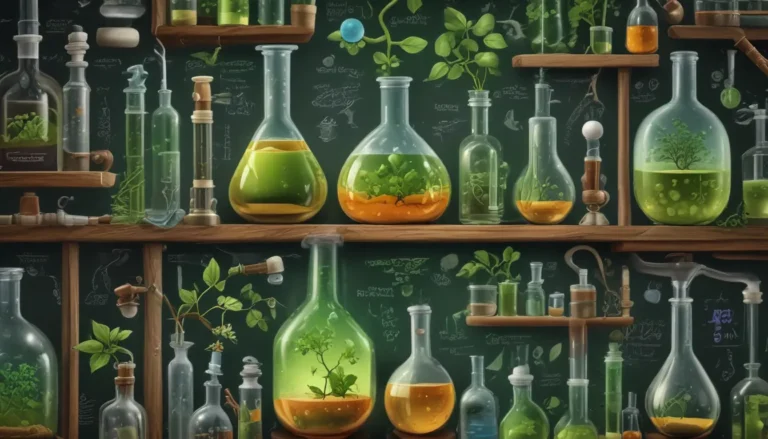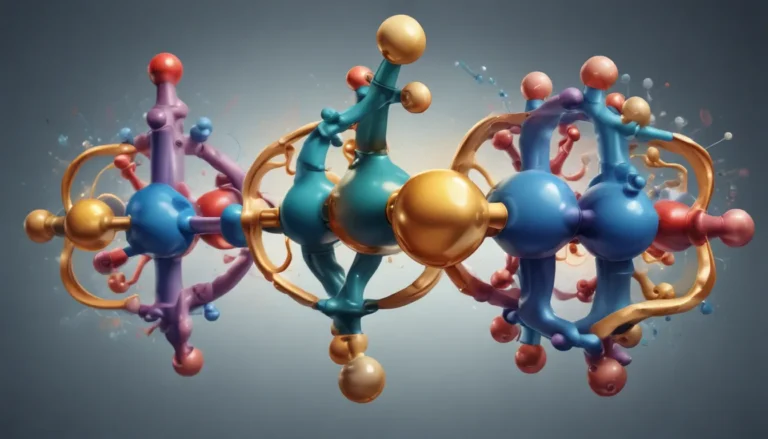A Note About Images: The images used in our articles are for illustration purposes only and may not exactly match the content. They are meant to engage readers, but the text should be relied upon for accurate information.
Chemical reactions are the backbone of the world we live in, shaping everything from energy production to the creation of life-saving medications. At the core of these reactions lies the transition state, a fleeting moment where molecules undergo a temporary rearrangement before forming products. This concept is a cornerstone of modern chemistry, providing profound insights into reaction mechanisms and kinetics. In this article, we will delve into the captivating world of the transition state and uncover 11 astonishing facts that showcase its importance in chemical reactions. From its role in determining reaction rates to the influence of temperature and pressure, we will explore the intricacies and mysteries surrounding this essential stage. So buckle up and get ready for an enlightening journey through the realm of the transition state!
Key Takeaways:
- Transition State is like a magical moment in chemistry where molecules transform into something new. It’s super fast, unstable, and crucial for understanding how reactions happen.
- Scientists use Transition State to unlock the secrets of making better medicines and speeding up reactions. It’s like a hidden key that helps them design amazing new drugs and catalysts.
The Significance of Transition State in Chemistry
The Transition State serves as a fundamental concept in chemistry, representing the transient and highly reactive intermediate state that a chemical reaction passes through during its progression. This critical point is where bonds break and form, leading to the conversion of reactants into products.
Understanding Reaction Rates with Transition State Theory
Transition State Theory, also known as the activated complex theory, is a pivotal theoretical framework used to comprehend and explain reaction rates. It enables chemists to determine the energy barrier that must be surmounted for a reaction to take place, known as the activation energy.
Observing the Elusive Transition State Structures
Directly observing Transition State structures poses a significant challenge in experimental chemistry due to their highly transient nature. However, through the use of advanced computational techniques and theoretical models, scientists can gain valuable insights into the characteristics and properties of these elusive intermediates.
The Unique Nature of Transition State
In the Transition State, molecular bonds are in the process of breaking and forming, resulting in a structure that is distinct from both the reactants and the products. This unique arrangement of atoms represents a high-energy configuration that is highly reactive and short-lived.
Characteristics of the Transition State
The Transition State is characterized by its high energy and instability. It represents a state of elevated energy with unstable molecular configurations. Reactant molecules must surpass this energy barrier to transition into the product state, with the energy difference determining the reaction rate.
Role of Catalysts in Lowering Activation Energy
Catalysts play a vital role in facilitating chemical reactions by reducing the activation energy needed for the Transition State. By providing an alternative reaction pathway with a lower energy barrier, catalysts enable reactions to occur more readily and at a faster pace.
Visualizing the Transition State with Reaction Coordinate Diagrams
Reaction coordinate diagrams are graphical representations that illustrate the energy changes occurring during a chemical reaction. These diagrams effectively depict the Transition State by showcasing the maximum energy point along the reaction pathway.
Understanding Transition State through the Hammond-Leffler Postulate
The Hammond-Leffler Postulate, a guiding principle in organic chemistry, relates the structure of the Transition State to the species in the reaction mechanism to which it is closer in energy. This concept aids in comprehending the nature of chemical reactions and predicting their outcomes.
Application of Transition State Theory in Complex Reactions
Transition State theory is applicable to a wide array of chemical reactions, from simple unimolecular reactions to intricate multi-step processes. It offers a unified framework for studying the kinetics and thermodynamics of diverse chemical transformations.
Influence of Temperature and Pressure on Transition State
Temperature and pressure play crucial roles in influencing the rate and stability of the Transition State. Variations in these conditions can impact the distribution of kinetic energies among molecules and alter the likelihood of successful collisions, ultimately affecting the reaction rate.
Impact of Transition State Understanding on Drug Design and Catalysts
A profound comprehension of the Transition State is indispensable in the development of pharmaceuticals and catalysts. By examining the intricacies of the Transition State, chemists can design more effective drugs and catalysts that enhance reaction rates, selectivity, and overall efficiency.
These 11 mesmerizing facts about the Transition State underscore its significance in the realm of chemistry. From elucidating reaction rates to influencing catalysts and the creation of new drugs, the Transition State plays a pivotal role in chemical transformations. Through ongoing research and technological advancements, scientists continue to unravel the mysteries of this crucial stage in chemical reactions.
Conclusion
Transition state stands as a captivating and essential concept in chemistry that has revolutionized our understanding of chemical reactions. It epitomizes the fleeting moment when reactant molecules are in an unstable state and undergo transformation into product molecules. Through the study of transition state theory, scientists have gleaned valuable insights into the factors impacting the rate and outcome of chemical reactions.
From deciphering the activation energy necessary for a reaction to transpiring to elucidating the role of catalysts in expediting reactions, the concept of transition state has paved the way for myriad advancements in chemistry. By delving into the intricacies of transition states, scientists have been able to design more efficient and selective reactions, develop new materials, and formulate pharmaceuticals that can target specific biological pathways.
Overall, the study of transition state has not only deepened our understanding of how chemical reactions unfold at the molecular level but has also propelled advancements across various fields. It remains an alluring area of research, and continued exploration of transition states holds the promise of unlocking even more thrilling possibilities in the realm of chemistry.
FAQs
Q: What is a transition state in chemistry?
A transition state is a high-energy, unstable state occurring during a chemical reaction, representing the point of maximum potential energy where reactant molecules are in the process of transforming into product molecules.
Q: How is the transition state related to the activation energy?
The transition state is directly associated with the activation energy of a reaction. The activation energy serves as the energy barrier that reactant molecules must overcome to reach the transition state and progress to form products.
Q: What role do catalysts play in transition state theory?
Catalysts expedite chemical reactions by furnishing an alternate pathway with a lower activation energy. In transition state theory, catalysts stabilize the transition state, thereby lowering the energy barrier and enhancing the reaction rate.
Q: How does the concept of transition state impact reaction selectivity?
Understanding the transition state enables scientists to grasp the factors influencing reaction selectivity. By adjusting reaction conditions or utilizing specific catalysts, chemists can control the stability of the transition state, leading to the desired product and limiting the formation of unwanted byproducts.
Q: What advancements have been made through the study of transition states?
The study of transition states has spurred numerous advancements in diverse fields. It has facilitated the development of more efficient chemical reactions, the creation of novel materials with desired properties, and the design of targeted pharmaceuticals that can selectively interact with biological pathways.
Transition state is just one piece of the puzzle when it comes to understanding chemical reactions. Curious minds might also find themselves drawn to exploring rate-determining steps, which dictate reaction speed. Reaction mechanisms provide a roadmap for how reactants transform into products, while reaction coordinate diagrams offer a visual representation of the energy changes occurring throughout the process. By delving into these interconnected concepts, aspiring chemists can gain a more comprehensive understanding of the fascinating world of chemical reactions.
Was this page helpful?
Our commitment to delivering trustworthy and engaging content is at the heart of what we do. Each fact on our site is contributed by real users like you, bringing a wealth of diverse insights and information. To ensure the highest standards of accuracy and reliability, our dedicated editors meticulously review each submission. This process guarantees that the facts we share are not only fascinating but also credible. Trust in our commitment to quality and authenticity as you explore and learn with us.






